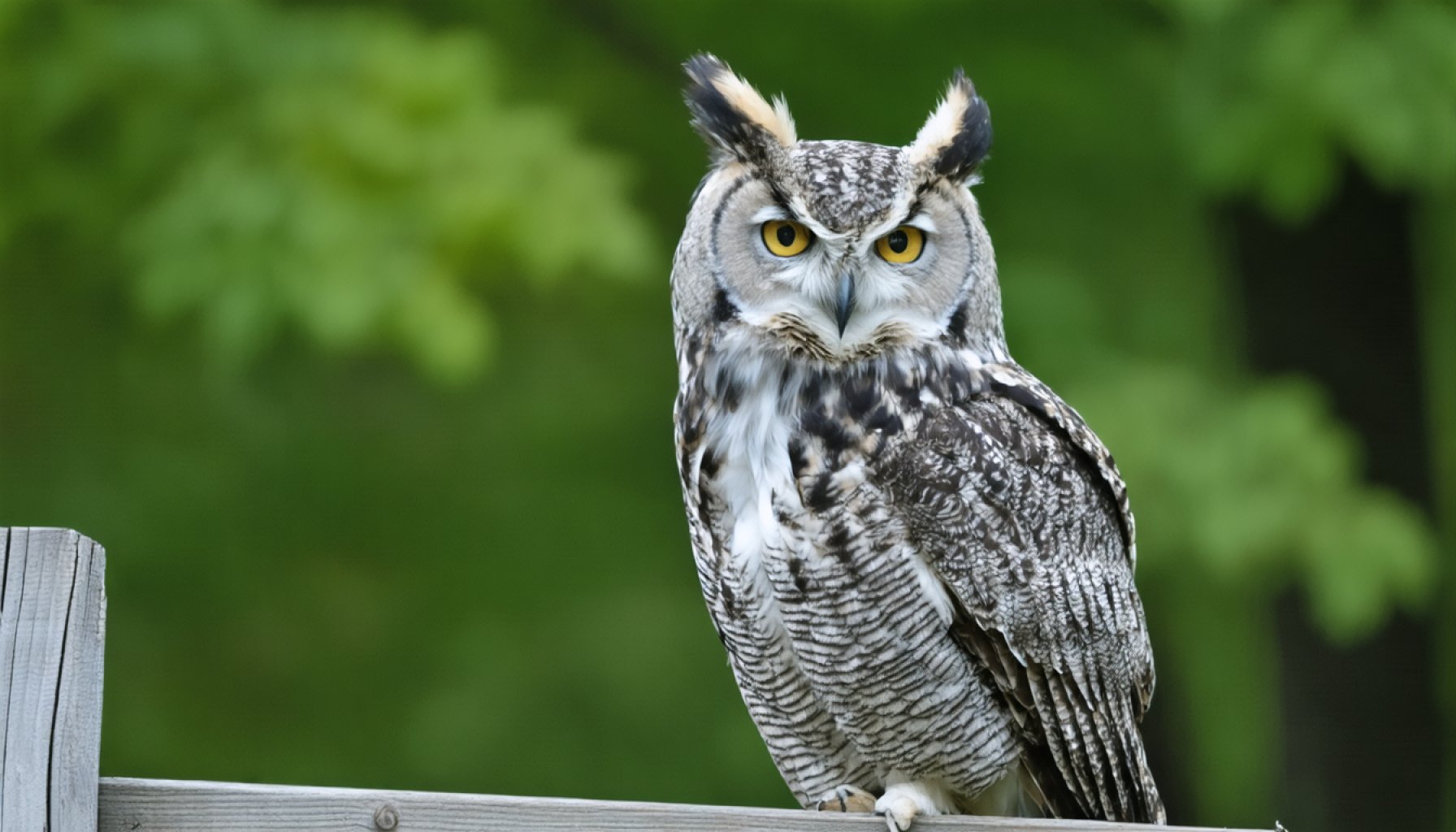- The great horned owl in Wake County has fallen victim to bird flu, marking the virus’s return after a year.
- Other wildlife affected include a hawk, numerous geese, and poultry in Hyde and Sampson Counties.
- The bird flu affects various animals, including cows, though experts say the risk to humans is minimal.
- The CDC confirms that the virus does not threaten food safety, as infected birds are kept out of the food supply.
- A human case in Louisiana underscores risks for individuals with health vulnerabilities, driving vaccine development efforts.
- The CDC advises avoiding wild birds, washing produce, and eschewing raw milk to reduce exposure risks.
- Wake County remains vigilant as the threat lingers, balancing caution with natural tranquility.
An eerie hush fell over Wake County as the majestic great horned owl, a sentinel of the night, succumbed to a silent invader. The North Carolina Wildlife Resources Commission recently confirmed an unsettling case of bird flu discovered in the stately raptor. In this shadowed grove, death hovered not only over this owl but also claimed a hawk and numerous geese, its deadly reach marking the area’s first encounter with the virus since the previous year.
Beyond the wild corridors of Wake County, fear unfurls its wings wide across the state. Earlier this year, whispers of infection spread through Hyde County’s bustling egg-laying operations, followed by Sampson County’s turkey flocks falling under the virus’s spell. The contagion’s relentless march affects not only birds but also casts a shadow over other animals, including cows.
Despite its grim journey, experts reassure that the average person remains at minimal risk. The Centers for Disease Control and Prevention (CDC) emphasize that this particularly virulent strain does not pose a food safety threat, as infected birds are firmly excluded from the food supply.
Yet, the human tragedy cannot be overlooked—a man in Louisiana succumbed to the disease, highlighting the potential risks for those with underlying health conditions. The U.S. is pushing forward with urgency, channeling resources into vaccine development, fortifying defenses against this feathered foe.
For the vigilant, the CDC offers guidance: avoid contact with wild birds, ensure thorough washing of produce, and shun raw milk, which North Carolina bans to safeguard its residents.
As nature’s chorus hints at danger past, Wake County stands watchful, mindful of the fragile balance between vigilance and the serene stillness of untouched landscapes.
How Bird Flu is Changing Wildlife Management in North Carolina
FAQs and Insights:
How-To Steps & Life Hacks: Preventing Bird Flu Spread
1. Avoid Interaction with Wild Birds: Stay away from areas with known outbreaks. If contact is unavoidable, wear protective gloves and masks.
2. Secure Poultry Housing: Ensure poultry have a barrier from wild birds and maintain clean surroundings.
3. Biosecurity Measures: Implement stringent hygiene practices such as changing clothes and footwear after contact with birds.
Real-World Use Cases:
– Wildlife Surveillance: Monitoring programs are crucial in tracking the spread in wild bird populations and preventing outbreaks in nearby poultry farms.
– Agricultural Policies: Farms are enhancing biosecurity protocols, which include routine testing and separation between wild and domesticated birds.
Market Forecasts & Industry Trends:
– Vaccine Development: The race to develop a bird flu vaccine is intensifying, with research focusing on broadening coverage to new variants. Expect breakthroughs in the next 3-5 years.
– Poultry Industry Impact: Market dynamics shift towards fortified facilities and increased prices as supply chains are affected by outbreak management efforts.
Reviews & Comparisons:
– Vaccination Methods: Current vaccines show promise in poultry but are under scrutiny for effectiveness in various strains compared to emerging international alternatives.
Controversies & Limitations:
– Vaccine Hesitance: Concerns about vaccine safety and efficacy need addressing through robust, transparent trials.
– Wildlife vs. Human Safety: Balancing ecological conservation with disease control remains controversial, especially with endangered species at risk.
Features, Specs & Pricing in Disease Management Tech:
– Monitoring Equipment: Thermal cameras and bird flu detection kits, although costly, offer precision in testing flocks and wildlife.
– Software Platforms: Cost-efficient solutions for tracking outbreaks have emerged, offering integrated data collection and real-time analytics for wildlife managers.
Security & Sustainability:
– Eco-Friendly Methods: Adoption of sustainable practices like organic biosecurity products helps minimize environmental impact.
– Long-term Monitoring Plans: Integrated systems for ongoing tracking of bird populations to prevent sudden outbreaks.
Insights & Predictions:
– Expansion of Surveillance Networks: Increased funding and technological deployment for wildlife health monitoring will become a staple in prevention strategies.
– Public Awareness Campaigns: Public health agencies are likely to amplify educational outreach to foster personal preventive measures.
Tutorials & Compatibility:
– Implementing Biosecurity in Small Farms: Step-by-step guides for farmers to create biosecure zones effectively.
– Tech Integration: Tutorials for software compatibility across mobile and stationary devices to maximize surveillance reach.
Pros & Cons Overview:
Pros:
– Enhanced vigilance helps prevent large-scale outbreaks.
– Investments in vaccine development are propelling medical research forward.
Cons:
– High costs for surveillance and prevention could burden small farmers.
– Human health risk, although low, remains a concern for vulnerable populations.
Actionable Recommendations:
– Stay Informed: Keep updated with the CDC’s guidelines on avian flu prevention and relevant biosecurity practices CDC.
– Educate Your Community: Hosting local discussions and workshops can elevate community awareness about bird flu risks.
– Adopt Hygiene Practices: Encourage routine sanitation in handling birds and poultry products.
For more information on general wildlife diseases and management, visit the The Wildlife Society.
By understanding these dimensions and integrating preventive measures, North Carolina can better manage the impact of bird flu outbreaks moving forward.
